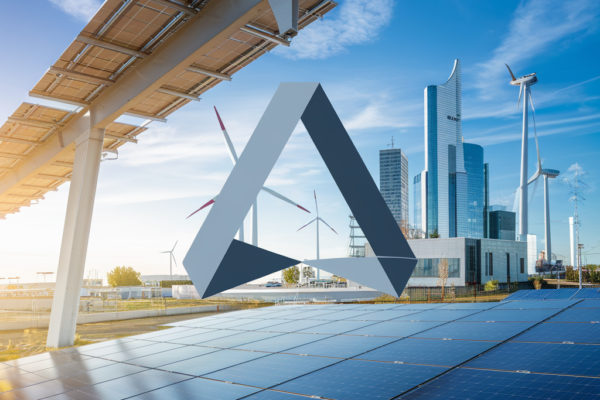Three years after Russian energy giant Lukoil completed its €1.5 billion divestment of Sicily’s ISAB refinery to Cypriot private equity firm G.O.I. Energy and commodity trader Trafigura, the facility faces existential threats that underscore deeper structural challenges in Europe’s refining sector[1][6]. Once accounting for 20% of Italy’s refining capacity and employing 3,500 direct workers, the Priolo complex now grapples with energy transition pressures, geopolitical fallout from the Russia-Ukraine conflict, and systemic underinvestment – serving as a cautionary tale for cross-border energy M&A in the sanctions era[2][4].
From Strategic Asset to Liability: The Lukoil Divestment Saga
Origins of the 2023 Transaction
Lukoil’s forced exit from Italy began with the European Union’s phased embargo on Russian crude imports, implemented in December 2022 following Moscow’s invasion of Ukraine[5][6]. The ISAB facility, wholly dependent on Russian Urals crude since 2022 due to banking sector restrictions, faced imminent closure until Rome invoked “golden power” regulations to facilitate its sale[5][11]. The eventual buyer consortium – comprising G.O.I. Energy (51%) and Trafigura (49% via supply agreements) – committed to maintaining employment levels, diversifying crude sources, and investing €500 million in green hydrogen infrastructure[3][7].
Structural Flaws in the Deal Architecture
Post-acquisition challenges emerged from the partnership’s inherent tensions: G.O.I.’s private equity horizon clashed with Trafigura’s trading-focused operational model, while €700 million in high-yield debt used to finance the purchase became unsustainable as benchmark interest rates rose 450 basis points between 2023-2025[12][16]. Crucially, the failure to secure binding commitments from Italian state lender CDP for transition financing left the refinery exposed when EU carbon allowance prices surged to €130/ton in Q4 2024[12][14].
The Perfect Storm: Multidimensional Crisis Drivers
Energy Market Dislocations
Italy’s wholesale electricity prices reached €298/MWh in January 2025 – 47% above the EU average – driven by prolonged reliance on imported LNG and delayed renewable deployments[12]. For energy-intensive refiners like ISAB, this translated into operational costs increasing 22% year-on-year, eroding margins despite record European diesel cracks of $38/barrel[14][16]. The facility’s location in Sicily’s non-interconnected grid zone exacerbated price volatility, with 34 forced shutdowns recorded in 2024 due to power supply issues[12].
Geopolitical Spillover Effects
Despite diversification efforts, ISAB remained indirectly tied to Russian energy flows through Trafigura’s continued dealings with Lukoil affiliates. The January 2025 drone strike on Lukoil’s Volgograd refinery – which supplied 15% of ISAB’s vacuum gasoil via third parties – triggered a 40% spike in intermediate feedstock costs, highlighting persistent supply chain vulnerabilities[13][16]. Concurrently, U.S. secondary sanctions on vessels using Russian-linked insurance created logistical bottlenecks, increasing Mediterranean freight rates by 130% since 2023[14].
Transition Financing Shortfalls
The refinery’s planned conversion to biofuel production and carbon capture stalled when the European Investment Bank froze €300 million in loans amid concerns over G.O.I. Energy’s offshore ownership structure[8][16]. This paralyzed the FALCON (Fuels from Advanced Low-Carbon feedstocks) project, intended to replace 40% of fossil inputs with waste oils by 2026. With EU taxonomy compliance deadlines looming, ISAB now faces €18/barrel penalties for non-aligned activities starting Q3 2025[14].
Broader Implications for European Energy Security
Contagion Risks in Refining Infrastructure
ISAB’s crisis coincides with Europe’s loss of 1.2 million b/d refining capacity since 2022, including Shell’s Wesseling closure and BP’s Gelsenkirchen downsizing[14][16]. Italy’s dependence on imported refined products has consequently risen to 63%, costing €4.2 billion annually in additional energy imports[12]. The Priolo facility’s potential mothballing would eliminate Europe’s last major sour crude processing hub, forcing Mediterranean refiners to pay $3-5/barrel premiums for sweet grades[16].
M&A Landscape Reconfiguration
Private equity’s retreat from energy transition deals accelerated in Q1 2025, with 67% of surveyed funds citing ISAB as a cautionary example[16]. Traditional operators like ENI and TotalEnergies now dominate asset consolidation, leveraging state-backed financing unavailable to financial buyers. The crisis has also intensified scrutiny of trader-refiner partnerships, with Vitol and Gunvor pivoting to tolling agreements rather than direct equity stakes[14][16].
Pathways to Resolution: Strategic Options and Tradeoffs
State Intervention Scenarios
Rome faces pressure to invoke “golden power” regulations for temporary nationalization, mirroring Germany’s 2022 takeover of Rosneft’s Schwedt refinery[1][11]. However, Italy’s debt-to-GDP ratio of 144% complicates direct ownership, making a “bad bank” structure with SACE guarantees more likely[12]. Alternative proposals include mandatory crude stocking requirements for refiners, modeled after Japan’s 1970s oil shock response.
Industrial Partnership Models
ENI’s proposed joint venture – offering ISAB access to Libyan light crude via the Greenstream pipeline in exchange for 35% equity – could reduce feedstock costs by $1.8/barrel[12][16]. However, the deal hinges on political stability in Libya, where renewed conflict has disrupted 200,000 b/d of exports. Separately, Saudi Aramco has expressed interest in a strategic supply agreement contingent on ISAB meeting IMO 2025 bunker fuel specs.
Conclusion: Lessons for Energy Transition M&A
The ISAB crisis underscores the inadequacy of traditional leveraged buyout models in capital-intensive, geopolitically exposed energy assets. Successful future transactions will require integrated partnerships combining operational expertise (via traders), transition financing (through infrastructure funds), and risk mitigation (with export credit agencies). As Europe’s refining sector consolidates, facilities demonstrating circular economy integration – like Repsol’s 2024 Cartagena biorefinery expansion – are outperforming peers by 19% on EBITDA margins, charting a viable path forward[16].
Sources
https://www.euronews.com/next/2023/01/09/trafigura-beheer-lukoil-italy, https://www.business-standard.com/article/international/deal-reached-for-sale-of-russian-owned-refinery-plant-in-italy-s-sicily-123011000029_1.html, https://knews.kathimerini.com.cy/en/news/rome-reportedly-okays-lukoil-sale-to-cypriot-firm, https://www.business-humanrights.org/en/latest-news/italy-to-scrutinise-sale-of-lukoil-owned-refinery-to-prevent-job-cuts-fuel-production-minister-says/, https://energynews.pro/en/isab-refinery-lukoil-refuses-to-sell/, https://www.enerdata.net/publications/daily-energy-news/lukoil-completes-sale-its-320-kbd-oil-refinery-sicily-italy.html, https://tass.com/economy/1603321, https://knews.kathimerini.com.cy/en/news/italy-weighs-in-as-cypriot-fund-goes-after-lukoil-plant, https://caliber.az/en/post/italy-s-largest-refinery-won-t-be-nationalised-minister-says, https://tass.com/economy/1906609, https://decode39.com/5072/italy-lukoil-trusteeship-russia-oil/, https://www.cleanenergywire.org/news/dispatch-italy-january-25, https://militarnyi.com/en/news/lukoil-s-oil-refinery-catches-fire-in-volgograd/, https://www.argusmedia.com/es/news-and-insights/latest-market-news/2641265-viewpoint-europe-s-refiners-eye-support-from-closures, https://brazilenergyinsight.com/2022/03/24/exclusive-lukoils-global-trading-arm-litasco-scales-back-operations-following-sanctions/, https://www.argusmedia.com/en/news-and-insights/latest-market-news/2641265-viewpoint-europe-s-refiners-eye-support-from-closures





